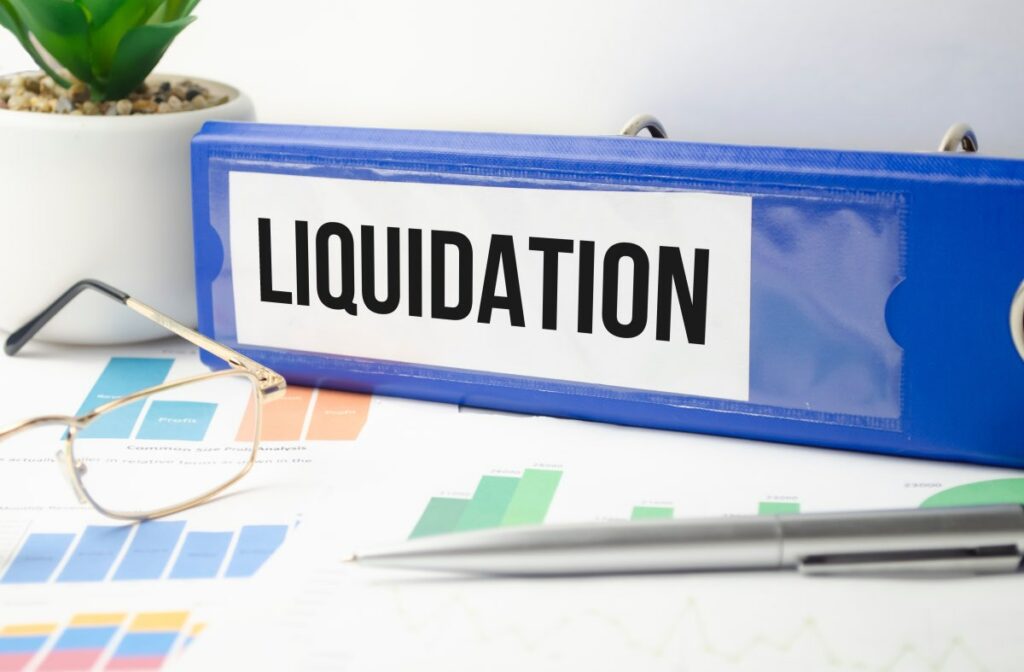- +352 444 222
- Monday-Friday 12:00-18:00
- 20, avenue Marie-Thérèse, 2132 Luxembourg


A liquidation is a procedure whereby a company concludes its existence, and sees its assets distributed to its beneficiaries after these assets have been converted into cash, if possible. It is possible to carry out a voluntary liquidation of a company, also known as a standard liquidation, without the company being insolvent. A second option for those wishing to dissolve a company is to proceed with a dissolution without liquidation, also known as simplified liquidation, which involves transferring the company’s assets to its sole shareholder without the need for a liquidation procedure. This article explains the differences between standard and simplified liquidation.
The standard liquidation procedure consists of three stages.
Article 1100-2 of the law of August 10, 1915 on commercial companies (“Loi 1915“) describes the first stage. A first Extraordinary General Meeting of Shareholders (“EGM“At this meeting, which must be attended by a Luxembourg notary, the decision is taken to dissolve the company and appoint a liquidator. From this date onwards, the company must indicate in all its documents that it is “in liquidation”, and must register as such with the Luxembourg Trade and Companies Register.
The liquidator realizes the assets, pays the creditors and reimburses the shareholders’ contributions. If any assets remain, they will be distributed to shareholders in the form of a liquidation bonus. The liquidator then completes his mandate and provides a report to shareholders at a second general meeting (“AGM”), which acknowledges receipt of the report and appoints a liquidation commissioner.
The liquidation commissioner examines the work carried out by the liquidator and then produces his report, which is provided along with the liquidator’s report to shareholders at a third AGM. The AGM then approves these reports, the liquidator closes the liquidation and publishes this decision in the Luxembourg Trade and Companies Register.
The closing of the liquidation must be published as soon as possible at the RCS, so that it can be published in the RESA (Recueil Electronique des Sociétés et Associations). This is important because the company is deemed to continue to exist for the purpose of satisfying creditors for a period of five (5) years following the date of this publication (this is known as the “passive survival” of the company).
After this stage, the company will be permanently struck off the Luxembourg register of companies, and it should not be possible to reopen a closed liquidation, except in cases of fraud.
This type of dissolution requires only one step, and is in theory much easier than standard liquidation. This procedure becomes possible when all the shares of a corporation are held by a single shareholder.
Luxembourg law formally regulates this simplified liquidation procedure via article 1100-1 of the 1915 Law.
In effect, this is a dissolution with immediate effect and no formal liquidation is required, so there is no need to appoint a liquidator. The procedure is straightforward, with the sole shareholder appearing before a Luxembourg notary to take all the necessary decisions.
Following dissolution, all the assets and liabilities of the dissolved company, even if unknown, are transferred to the sole shareholder by virtue of a universal title of succession (“transmission universelle de patrimoine”). The creditors of the dissolved company may, within 30 days of publication of the notarial deed, request the President of the District Court, sitting as in an emergency, to order appropriate safeguard measures.
A separate declaration by the company’s management body will therefore sometimes also be requested by the notary with regard to this transfer of the dissolved company’s debts and the notification of creditors.
Dissolution without liquidation is an easier procedure than liquidation. However, if the company’s annual accounts or tax returns are overdue, we won’t be able to request this type of settlement, as the administration will not issue the necessary certificates. In addition, there will be a risk that it will initiate an audit before sending the certificates, as this is the last chance to check a company’s file before it leaves Luxembourg. That’s why more and more tax advisors are recommending standard liquidation. It’s also worth noting that the three stages of standard liquidation described above can be completed in a short space of time, within a few days if liquidation operations are limited and everything is prepared in advance. In conclusion, the choice between standard and simplified liquidation will depend on the company’s situation, and will require both tax and legal analyses.
Dear users, on 15/06/2022 Internet Explorer will be retiring. To avoid any malfunctioning, we invite you to install another browser, such as Google Chrome, by clicking here, or the one of your choice.
Please check this before contacting us in the event of a problem.
